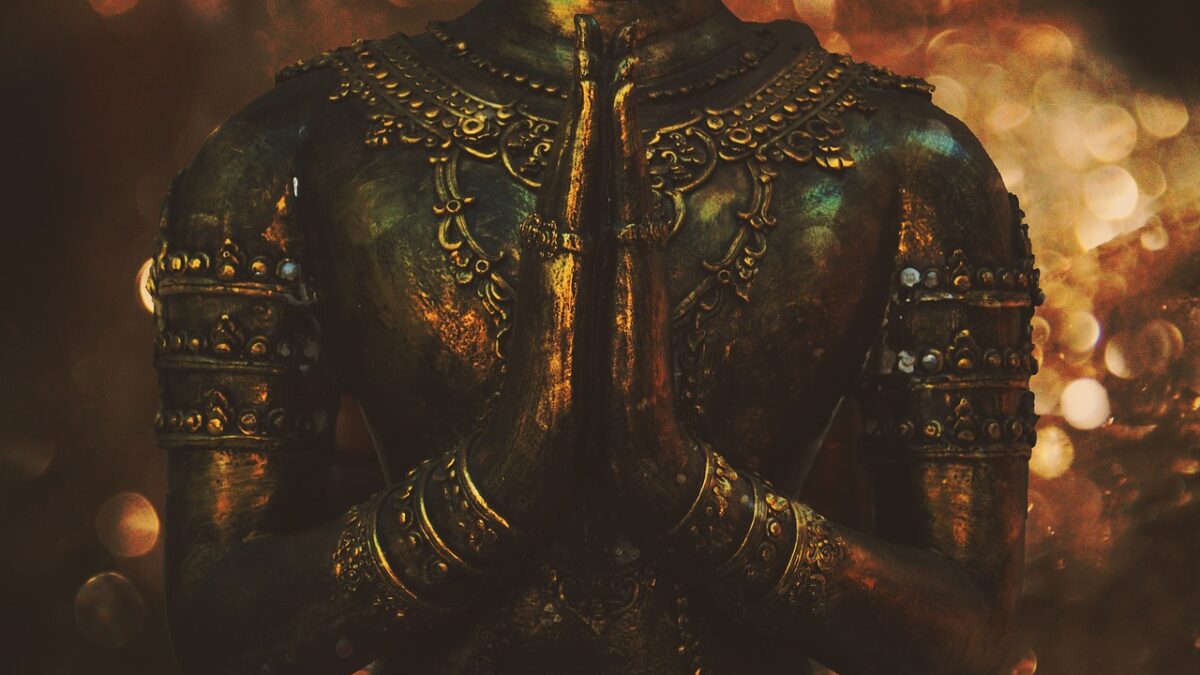In addition to modern yoga, there are classical movements that were described many years ago. There are only four, and they are considered integral parts of the indivisible teachings of yoga. They are: Jnana Yoga, Bhakti Yoga, Karma Yoga and Raja Yoga.
Raja Yoga
It’s the yoga of work with consciousness; there’s practically no asanas, and practitioner’s development goes in the field of meditation and self-analysis. Raja yoga unites the practice of the highest levels of yoga: pratyahara, dharana, dhyana and samadhi. Literally, the name sounds like “Queen of Yoga”. The aim of Raja Yoga is spiritual development, which should lead the student to the liberation of consciousness from any physical and mental limitations, which allows him to feel the merger with the higher forces and to realize them in themselves. The main tool of Raja Yoga is considered to be samyama – the technique of simultaneous practice of the three higher stages of yoga (dharana, dhyana and samadhi).
Bhakti Yoga
Bhakti yoga, or “yoga of love and devotion,” is a branch of yoga whose essence is to establish a close connection between the practitioner and God. At the heart of the practice is service to God. Ancient Vedic texts call Bhakti Yoga one of the easiest ways to achieve superconsciousness at the present stage of human development. One of the most common methods used in the practice of Bhakti Yoga is japa-meditation – that is, the repetition of mantras. It is believed that if one repeats the sacred texts continuously for a long time and performs this ritual regularly, over time the mantra will sound itself in the practitioner’s heart and its meaning will become actualized. Thus, even by unconsciously repeating the prayer, the disciple may through systematic repetition come to realize its profound meaning.
Jnana Yoga
In Sanskrit, this means “yoga of knowledge. Its purpose is to help the student overcome avidya (ignorance) and get closer to brahmavidya (divine knowledge). This style of yoga also belongs to the spiritual path of development and consists of hard work on the cultivation of the mind. The goal of Jnana yoga is to free the mind from the limited conditions of cognition into which it is placed by sensual perception and logical thinking based on contradictions. A different approach to thinking should lead to the expansion of ideas and concepts, then of perceptions, which will eventually lead to the disappearance of illusory sensations. Jnana yoga teaches not to accumulate disparate knowledge, but to see in all phenomena the principles underlying all existence. Cognition of these principles is gained through the teacher and individual meditation on a symbol or text from the ancient scriptures.
Karma Yoga
Karma yoga is the “yoga of activity,” which explains how to change one’s destiny.
And life through changing one’s attitude. This style of yoga has to do with the pursuit of inner development. Karma yoga states that once a person revises their attitude to what happens to them, this in turn will inevitably change the nature of the events that happen to them. In the system of Karma yoga it is believed that one does not actually perform independent actions, but is a particle driven by much greater forces. In this case, all events cease to be evaluated and become neutral; through awareness of this fact, nonattachment is practiced. Unattachment to the bad and the good, to pleasure and suffering. For example, he perceives obstacles and difficulties along the way not as a cause for grief, but as useful conditions for self-development.
